Sarum Hydraulics has designed and manufactures its own high quality hydraulic pumps for over 35 years. Let’s look at the bigger picture on leaks in hydraulic systems. Sound design, controlled manufacture and proactive maintenance will largely eliminate leaks. Unwanted leaks are bad for the hydraulics industry and terrible for the Environment, so this is our take. What have we learnt about hydraulic leaks?
As always, let’s sort out exactly what the problem is. Not what people think is the reason. Just what the problem is. Make sure that everybody is reporting the same thing. Ask and quietly listen. As always, we would encourage anybody who has a useful observation to speak up and tell somebody. If you are using a “5 whys” or “8D” way of tackling a problem, you ask and listen. If a unit has been repaired recently, do write that down. For example, a seal may have been fitted back to front or damaged.
How do you define hydraulic leaking?
So, what does “leaking” mean? Are we talking about a drip of an external leak that you can see, are we talking unexplained oil appearing or are we saying there is some sort of internal leak that has some effect? How much of an external leak is to be expected or is acceptable? We would say there is no reason for hydraulics to leak externally. Mineral oil isn’t an acceptable fluid to deposit onto the ground, as it is very harmful to the environment. Certain industries and users take a lot of trouble to guard against odd leaks, even in failure. For example, grass mowing equipment will invariably have hose swivels with an O ring in them to provide secondary protection against leaks. The equipment that Sarum Hydraulics manufactures for hospital use has the same secondary sealing in hose fittings as any leakage of oil onto hospital floors is unacceptable.
Why does my hydraulic system have an external leak?
External leaks are tiresome if there is a mess or contamination. Hopefully you can see where the leak is.
What are the main reasons for external hydraulic leaks?
We would just keep in mind whether a unit has been repaired. Fitting the wrong seal, damaging a seal or fitting one back to front is high on our list of possible root causes. Manufacturers make their kit every day, so you would hope they are good at it. A repairer may or may not know the kit.
Let’s look at different leaks and weeps.
Bonded washers can often leak where they have not been tightened up, where they have been damaged upon assembly or simply degraded with age. There may be a more serious reason. Check the finishes on the sealing surfaces, that the thread is normal to the port and that the thread isn’t chamfered too deeply. From experience, we would say that if you have a leaking bonded washer, don’t gamble on a simple “tweak on tightness” being the fix, particularly if the unit has not leaked for years.
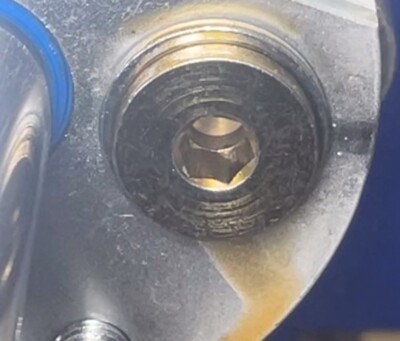
My bonded washer is weeping
What can I do if a copper washer is leaking? Copper washers are still widely used for sealing and are remarkably successful. If you are tightening them excessively, they will struggle to seal. If the finish on the faces of the housing is poor and they will also be unable e to cope with geometric inaccuracy, for example where a port isn’t tapped normal to the surface of the block or a male thread is running out relative to the seal shoulder.
O rings can weep. Again, they may have been damaged upon assembly, the housing may be the wrong size or have poor surface finish. An o ring can extrude if there is a gap through inadequate tightening down on assembly, too large a clearance due to design or manufacturer or the pressure is too high. O rings can simply degrade due to age or the fluid they are being used on. You can normally see from a weeping O ring why it has failed. For example, rotation or excessive clearances in the housing will leave clear evidence.
A leaking SAE O ring seal is unfortunate, as we have found these incredibly reliable. Again, look at O ring degradation after a period of time. Maybe the fitting has come loose due to vibration. If it leaks on day one, the wrong size O ring or the housing machined the wrong size or with poor finish would be our tips. The undercut on the male thread also needs to be of a controlled diameter, as this forms part of the housing. Also note that when you tighten down a fitting into a SAE sealing arrangement, you will feel dead solid metal on metal. If it feels rubbery and won’t go solid, our tip is that the housing is the wrong size or the O ring is wrong. The reason is that the O ring fills a large proportion of the available housing and is quite sensitive on size.
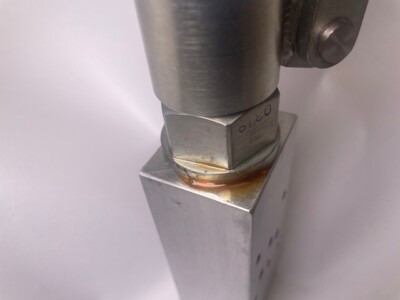
My SAE seal is leaking
Shaft seals can leak due to wear. That should be evident. Shafts can move axially like a hydraulic ram or rotate as in a hydraulic motor or pump. The seal may be worn or have gone into a failure mode like rolling. You might find the part in contact with the o rings or seal is worn or indeed never had a good enough surface finish on day one. We have always found that you ignore the recommended clearances and surface finishes on seals at your peril. For years we tended not to use u seals and lip seals because we worried about being able to swap seal compounds for our catalogue equipment. We now use massive numbers in our OEM oil hydraulics and are great fans. The hydraulics industry has used them very widely for years. We have found Polyurethane to be an amazingly tough material and as this is used extensively in lip seals. Leaking or weeping probably shows something quite serious. If you have had something repaired, make sure that the lip seal hasn’t been fitted back to front.
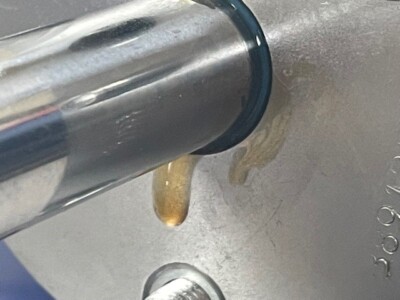
My shaft or ram seal is leaking
Corrosion on seal housing, whether it is on a shaft, in a bore or in the seal housing, it is well worth checking. If something did work for a long time and is now leaking that could correlate with corrosion over time. You might have to address why something is corroded. Corrosion is a disaster.
What about oil leaking from “somewhere”?
Interfaces between hydraulic parts and leaking gaskets are a favourite. Leaks from seals within assemblies and a tortuous route for the oil are a dreadful challenge to diagnose. Always keep in mind materials.
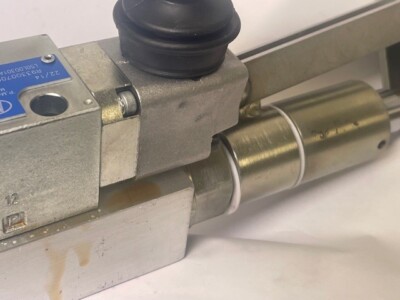
The interface between hydraulic parts is leaking
Porosity on castings and back end billet cracks in extrusion can be very elusive. It is fair to say that these material defects would have been there since day one, but maybe the leak was truly minute. We are always fans of air bubble testing and using a watchmaker’s eyeglass.
Seals perished or degraded. That is a whole area that is slightly peripheral to this paper. Sure enough, if you have the wrong seal compound, the seal will possibly swell, shrink or break up, eventually giving you that leak. Is it every seal in the installation? Perishing can also be caused by UV or solvents used for cleaning or degreasing. Was a seal perished due to UV degradation on the day it was installed? There are good web resources on seal shelf life and compatibility of different elastomers. Eastern Seals are just one of many guides on https://www.easternseals.co.uk/useful-information/product-information/chemical-compatibility-guide/
Why has my hydraulic system got an internal leak?
What about an internal leak in a hydraulic system where you can’t instantly see what is happening? We would first attempt to see whether fluid is being returned into a reservoir. That might instantly tell you that a relief valve is set too low or a directional valve is leaking back to tank. This is a dreadfully difficult problem. Get a circuit diagram and consider which components can be bypassed or removed to diagnose where the issue is. Consider using a second pump to pressurise system legs or even use compressed air to see what is happening. You need to diagnose what is happening using lots of pieces of evidence. Under no circumstances take the whole lot to pieces too hastily. You risk buying service kits and wasting hours when you may be going down the wrong path.
Does the web tell you why your hydraulic is leaking?
If it is a proprietary hydraulic unit, other users might well have the same issue. Maybe that is one of the best things about the internet. Manufacturers can no long claim that a problem is a one off if thousands of people worldwide report the same issue and how they sorted it out. And these users often save a manufacturer time if they are diagnosing what the problem is. Are particular parts available readily as spares? We had a fractured pressure feed pipe due to fatigue. The manufacturer had hundreds in stock as a spare part, so it was obviously a common problem.
Should I carry out preventive or planned life maintenance to help guard against leaks?
If you are dependent on a hydraulic system for a manufacturing process, or if your equipment is used in a safety critical application, preventive or planned life maintenance makes perfect sense. Why wait for a component to fail? To come up with a plan, you will need to evaluate each component within the hydraulic system. Take into account manufacturer’s recommendations on service life and severity of duty- for example, a hydraulic hose may need to be changed anywhere between 1 and 5 years after entering service. Manufacturers may mark their equipment with date of manufacture and a replace by date but otherwise refer to operation and maintenance manuals web research to determine a sensible period between service or replacement. From this information, write your service plan and incorporate it into your maintenance operations and any existing programme you may already have for maintaining plant and equipment.
A lower level plan can often also be put in place for equipment operators to carry out simple daily, weekly or monthly checks, as determined by evaluating what components within the system would benefit from visual inspection of condition and looking for wear and tear, e.g. damage or deterioration of flexible hoses. This may pay dividends as you might catch something before it fails and causes a breakdown, as well as mitigating any potential safety risks. It’s also great to have a bit of ownership for your own kit and have some responsibility for keeping it up to speed.
Leaks need not be part of hydraulics but when they happen there is a route through to sorting them out.
We can sell you a Micropac pressure test pump and we know our own gear very well after 35 years. Look at our range on www.sarum-hydraulics.co.uk or contact us on pumpsales@sarum-hydraulics.co.uk .

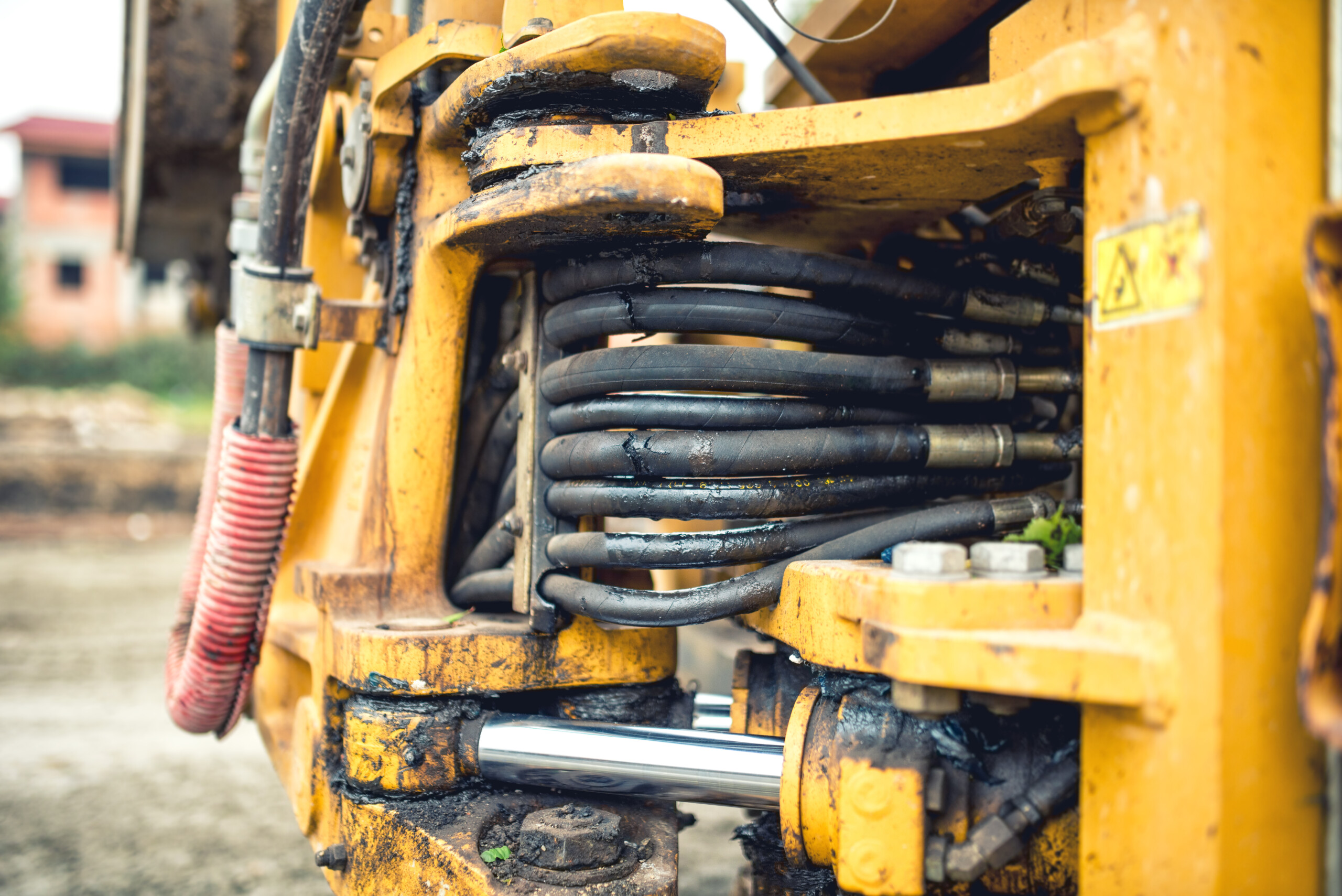
Leave A Comment